13 underrated hidden gems in Spain, recommended by travel bloggers.
One of the most incredible countries in Europe has to be Spain. It’s no surprise that millions of tourists visit each year; Spain truly has it all! From vibrant cities and pristine beaches to rich history and stunning architecture, boredom isn’t an option here.
But with so many visitors, some parts of the country can feel a bit too touristy. Luckily, there are still plenty of amazing places to discover, if you know where to look. In this guide, we’ll uncover some of the most underrated hidden gems in Spain that are absolutely worth your time!
Disclosure: This post may contain affiliate links, which means that if you purchase through one of the product links, we’ll receive a small commission at no cost to you. We only promote products and services we 100% believe in. Thank you so much for supporting us! Read more about it in our disclosure policy.
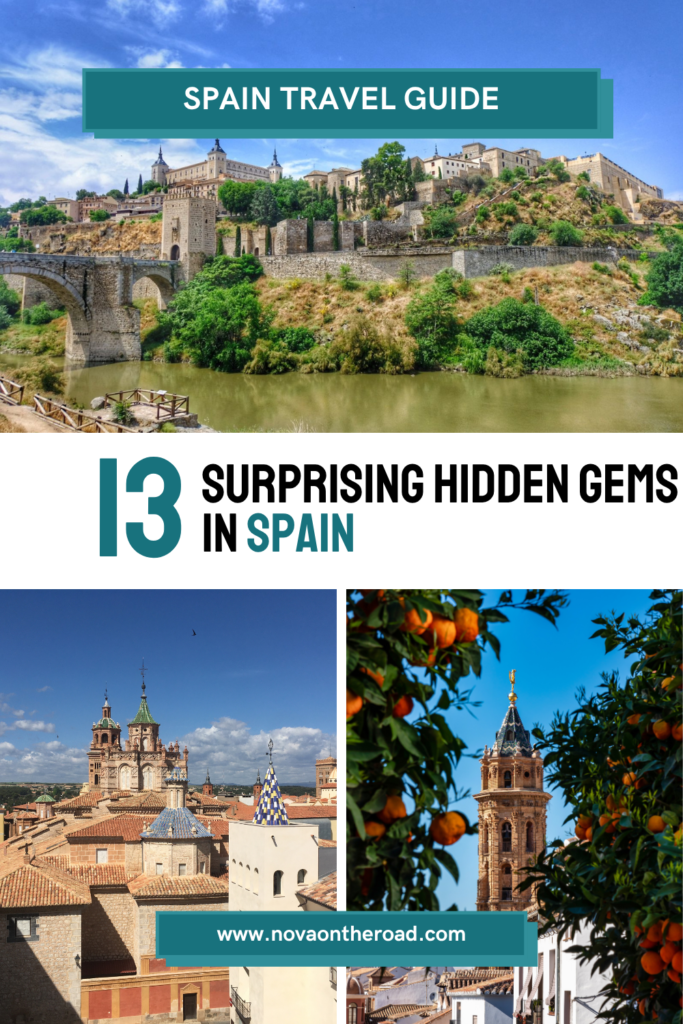
About Spain
Spain is a diverse and dynamic country in southwestern Europe known for its passionate history, rich culture, and dramatic landscapes. There’s something in Spain for all kinds of visitors, from the colorful streets of Madrid and Barcelona to Andalusia’s quiet white villages and the windswept Galician coastline.
You can spot a beautiful mix of Moorish, Roman, and Gothic influences in the dramatic architecture throughout the country. And not to forget, the world-class dining, friendly hospitality, and over 300 days of sunshine in some regions, makes that Spain captures the heart of so many visitors.
The 13 best hidden gems in Spain
Antequera
Contributed by Lisa from Nova on the Road
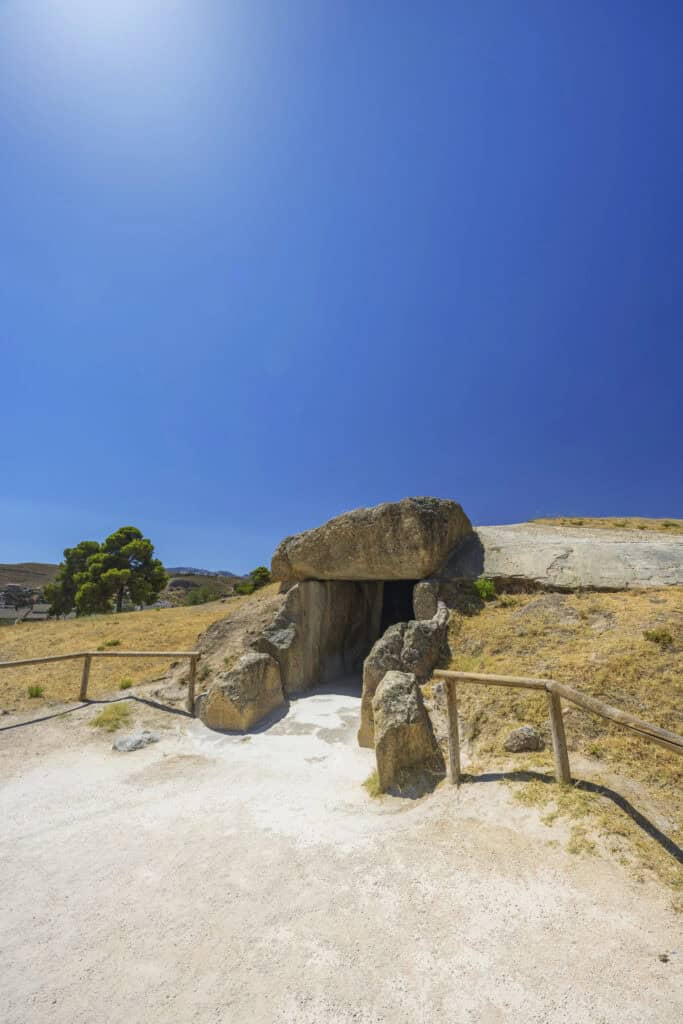


One of my own favorite hidden gems in Spain, is the town of Antequera (often called El Corazón de Andalucía: “The Heart of Andalusia”). I simply can’t put my finger on what it is that makes this town so charming. It seems to quietly attract the culturally curious, and once you’re there, you’ll understand why.
Antequera is simply magical. And I’m telling you that from a rainy-day perspective too; yes, I did happen to visit there on a rainy day (it was pouring!). But despite the weather, this quaint little white town left a mark on my heart. From the scent of orange trees (and rain) to the mysterious Dolmens and breathtaking mountain views, Antequera is definitely worth a visit.
Some activities that you cannot miss out on are:
- Climb up to the Alcazaba de Antequera for amazing views
- And find more views at Mirador de las Almenillas
- Visit one of the 33 churches (like Iglesia de Santa Maria de Jesus, Real Colegiata de Santa Maria la Mayor, or Parroquia San Sebastian)
- Explore the historic Dolmens (Dolmen de Viera and Dolmen de Menga) and the beautiful museum accompanying them
- Admire La Peña de los Enamorados (also known as ‘’Lover’s Rock), that has the shape of a face
- Find unique structures at El Torcal de Antequera
After having visited the Dolmens at its museum, I got so interested and fascinated by this town and its surroundings. I highly recommend visiting the hidden gem of Antequera for at least 2 nights. It’s only an hour’s drive from Malaga, making it super accessible, yet still hidden.
Cordoba Patio Festival
Contributed by Chelsea from Adventures of Chels
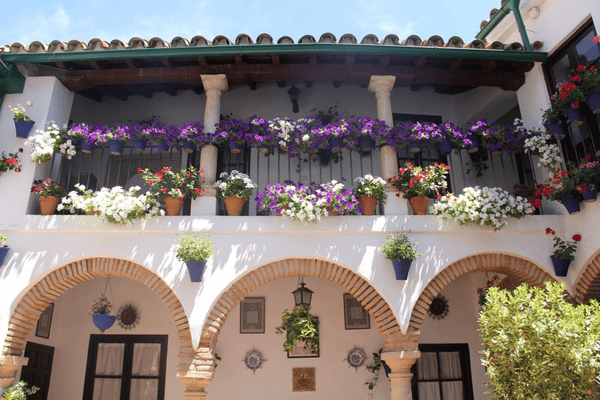
A great underrated hidden gem to experience in Spain is the annual Patio Festival in Cordoba. The festival started in 1921 and is usually held in the first and second week of May. Patios and courtyards all around the city are covered in fully bloomed flowers and are open to the public for viewing. It’s an event so significant that it’s even listed as a UNESCO celebration!
While the patios and courtyards are open to the public for viewing enjoyment, the festival is also a competition. The first of the competing categories is for monumental and stately courtyards which consist of old palaces and religious buildings. The second is for competition courtyards which consists of all the courtyards that have participated in this festival since its start in 1921. Regardless of which category they’re in, every flower filled patio and courtyard is one worth seeing!
Enjoy your time at the beautiful Patio Festival in Cordoba.
Montserrat
Contributed by Audra from The Nerd Traveler
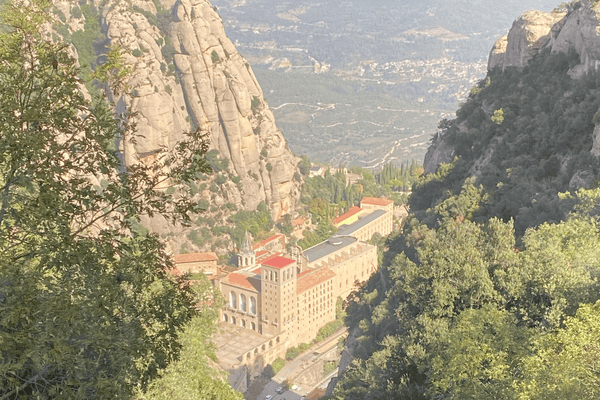
Located about an hour northwest of Barcelona, the hidden gem of Montserrat should not be missed. Montserrat, or “jagged mountain” in Spanish, is home to a tucked away Benedictine monastery and amazing views.
The Santa Maria de Montserrat Abbey was founded in 1025 and later rebuilt in the late 1800s and early 1900s. The Abbey is home to both the famous Our Lady of Montserrat statue, the patron saint of the Catalonia region, and the Escolania, one of the oldest boy choirs in Europe.
But Montserrat is not only for religious pilgrims. Given the surroundings, hikers and nature lovers are also drawn to the area. Trails wind through the mountains, offering everything from leisurely strolls to more advanced climbs. Visitors can also ride a funicular to the top of the mountain. The panoramic views include the Catalonia region and, on very clear days, you can see the Pyrenees.
Helpful Tip: To get there, you can take the train from Barcelona to Montserrat-Aeri and then decide on boarding an aerial cable car for an exhilarating climb or descent. There is also the Cremallera de Montserrat railway.
For those wanting to beat the crowds, plan to arrive earlier in the day. There is also a better chance to hear the Escolania, too! They perform early afternoon and in the evening every day except Saturday.
Montserrat is an amazing blend of natural and spiritual, making this well kept secret a wonderful day trip from Barcelona.
Castillo de San Miguel
Contributed by Charlotte from The Travel Psychologist

Castillo de San Miguel in Almuñécar, Spain, is a historic fortress with origins dating back to the Phoenician and Roman periods. Expanded during the Moorish era, it became a strategic stronghold with 40 towers and three gates. In the 16th century, King Ferdinand added a moat, drawbridge, and fortified entrance.
Whilst Almuñécar is not often included in Andalucía itineraries, the castle certainly makes a trip to the town worth it. It is a large castle, with an interesting museum within the castle grounds. It also has panoramic views over the town and coastline.
Close to the castle, you will also find la Cueva del Siete Palacios, or the Cave of Seven Palaces, which dates back to the Roman era. It was originally part of a Roman palace and now houses the archaeological museum of Almuñécar. When we visited the castle and museum in May, they were virtually empty which certainly makes these sites hidden gems of the region.
I would recommend that you visit the castle and Cueva on a day trip from nearby Nerja, which takes less than half an hour by car or bus. To stay, Hotel Boutique Sibarys is a great choice. It’s a gorgeous, adults only, boutique hotel in a great location.
Cadaques
Contributed by Lavina D’Souza from Continent Hop
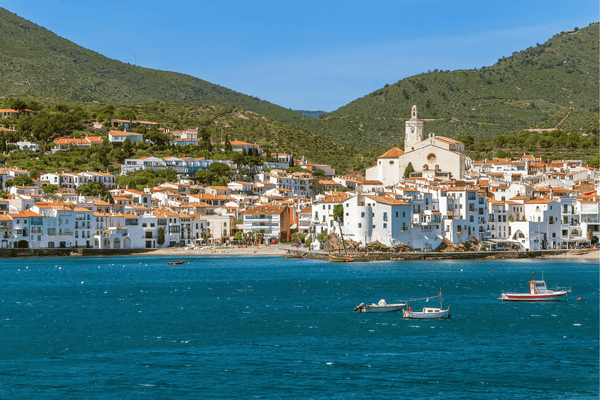
Do you know why Cadaques has managed to stay off the tourist radar for so long? When people spend only a week or so in Spain, they are looking for easy day trips from Barcelona or Girona. But when I decided to explore Cadaques, I had to first figure out the puzzle of reaching this tiny town.
Cadaques ensures you have to hop on almost all the transport options to reach this undiscovered beauty. After you land in Barcelona or Girona, take a bus or train to Figueres, and then either opt for a taxi or local bus to reach Cadaqués.
This laid-back town, facing the sea, is located close to the Cap de Creus Natural Park, ensuring it is blessed with natural beauty to soothe the eyes. As I walked down the cobblestone streets lined by white houses, the historical quarter gave me a charming welcome. The combination of pebbly beaches, secret coves, and clear waters was enough to make me fall in love with the raw beauty that surrounds Cadaques.
In moments like these, I understood why the renowned Salvador Dalí chose to make his home here, which has now been transformed into a museum. Today, Dali’s work still attracts many artists to Cadaques, adding to its culture and art. You can take a tour of different art exhibits and soak in the creative vibes. However, if you wish to visit the Salvador Dalí House Museum, a prior reservation is required. With so many interesting things to offer, Cadaques deserves to be part of your Barcelona itinerary.
Pontevedra, Galicia
Contributed by Daniela from Ola Daniela

Unless you’re hiking the Camino trail, Galicia – Spain’s verdant north-west corner – is already one of the country’s best-kept secrets. The small Galician city Pontevedra completely took me by surprise.
The well-preserved historic centre of the capital of the Rias Baixas is a lively grid of stone alleyways, leafy squares, Gothic churches and old manor homes. But this open-air museum is anything but stuffy – on the sunny day we visited every street had tables spilling out from restaurants and bar, where families and friends were catching up over afternoon drinks and tapas.
Start at the Mercado de Abastos (fish market), then wind through whichever streets take your fancy, making sure you pass by the Gothic Santa María la Mayor Basilica, baroque Iglesia de la Peregrina, and the remains of a 14th-century convent, the Ruínas de San Domingos.
Then stop for lunch at Bar Estrella, a tiny restaurant with traditional Galician dishes. This region of Spain is famous for having some of the best seafood in the country. The obvious thing to order is polbo á feira (known as polvo à galega in the rest of Spain), a traditional dish of sliced octopus layered on top of boiled potato and dusted with paprika. Add to that a silver tray loaded with scallops, grilled over charcoal and smothered with a garlicky oil.
Teruel
Contributed by Jamie from What’s Down That Street
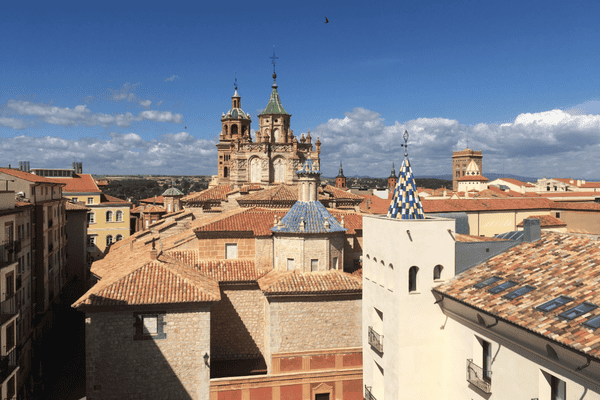
Teruel exists. So says the movement trying to raise awareness of the city. So if you’ve never heard of Teruel, you’re not alone. In a world saturated with ‘hidden gems’, Teruel truly is one, even among Spaniards.
This tiny medieval city, tucked away in the mountainous region of Aragón, is full of stunning building, ancient legends, and the kind of authentic charm that many bigger cities lost a long time ago.
The highlight here is the architecture. Teruel is one of the best cities to see Mudejar – a fusion of Islamic and Christian styles unique to Spain. My personal favourites are Teruel’s towers – San Martín and El Salvador – two almost identical 14th-century structures complete with dazzling ceramic tiles. Climb up the winding steps of El Salvador for the best views over the city. Equally impressive is the Cathedral of Santa María de Mediavilla, with a ceiling dubbed the “Sistine Chapel of Mudejar’’.
Alongside its architecture, Teruel is best known for its tragic love story – the tale of Diego and Isabel. A kind of precursor to Romeo and Juliet, you can learn about them in the excellent multimedia museum the Mausoleo de los Amantes.
And for foodies, Jamón de Teruel is a must-try when you’re in the area. Teruel might not be on your radar yet, but it’s 100% worth the detour. Read more about why you should visit Teruel.
Tarragona, Catalonia
Contributed by Juan from Planet of Adventures

I consider Tarragona one of my favourite Underrated European Destinations after living there for a while a few years ago.
Located about an hour away south from Barcelona, Tarragona is a gem with beautiful beaches, incredible Roman ruins, and natural landscapes within very short drives.
Tarragona was the capital of the Roman Empire in the Iberian Peninsula and it has been a UNESCO World Heritage Site since 2000. Some of the most impressive sights to visit are the Amphitheatre, the Roman Circus and the city walls. In the outskirts of the city you can also visit the Roman Aqueduct as well which is pretty impressive.
The old town is a delight to wander and you will find many tapas places along the narrow streets and in the bustling Plaça de la Font (Font Square)
There are three great beaches within walking distance from the centre, my favourite being the Arrabasada Beach.
Within a short drive or bus ride you can visit PortAventura which is one of the biggest theme parks in Europe.
Whether you want to have a sunny break, a cultural immersion, a party escapade or a family holiday this is surprisingly one place that doesn’t come up so often on the list of destinations of people visiting Spain.
Toledo
Contributed by Nofar Ronen from Traveling Outside the Box
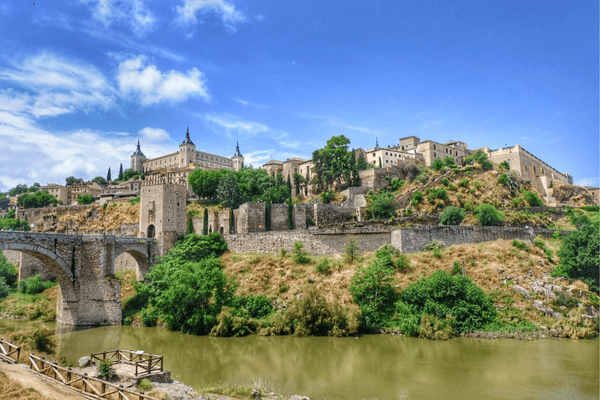
During a trip to Spain with my siblings, we decided to spend a day in Toledo, a small historic city not far from Madrid. We took the train from Atocha Station. We originally planned to take the 11:20 train, but it was already full, so we bought tickets for the 12:20 train instead, along with return tickets for 19:20. I recommend booking in advance to make sure you get the time you want. By the way, the station itself is quite beautiful.
The train ride to Toledo took about 25 minutes. When we arrived, we found a small, charming city with steep streets and a unique atmosphere. We walked around for hours. We visited the impressive cathedral and two old synagogues – Santa María la Blanca and El Tránsito – that reflect the city’s Jewish heritage.
At some point we decided to have a picnic. We had brought fresh bread from Madrid, and in Toledo we found a small family-owned shop with local cheeses, cured meats, olive oil, beer, and marzipan. I don’t usually like marzipan, but this one was surprisingly good.
Later we went to San Martin’s Bridge. We had planned to try the zipline, but a heavy rainstorm started. Instead, we found a cozy tea house called Teteria Dar Al Chai – a perfect place to warm up and relax. It was a great way to end the day in this beautiful city.
Reus
Contributed by Claire from What to Do in Barcelona & Beyond
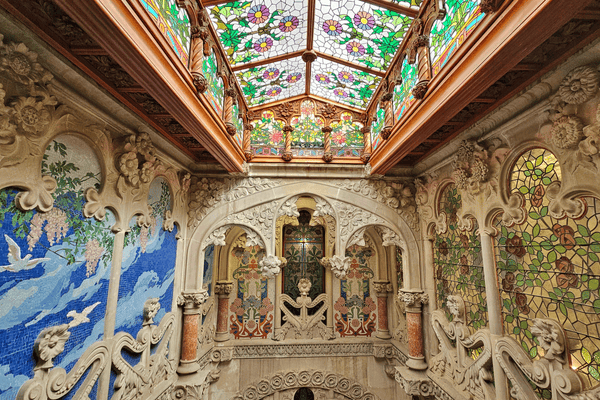
Reus is a charming town that is often overlooked in favour of Barcelona and the seaside resorts of coastal Catalonia, but it is well worth a visit, especially if you take a flight into Reus.
Reus is the birthplace of the famous Catalan architect Antoni Gaudí (who designed the Sagrada Familia and other iconic buildings in Barcelona), and there are no Gaudí works in Reus; the city has numerous examples of Catalan modernist architecture designed by his contemporaries, such as Lluís Domènech i Montaner.
Casa Navas, in the centre of Reus, is one of the best-preserved Modernist buildings in Europe and still has original furniture, stained glass, mosaics, tapestries, and intricate woodwork in place. The entrance hall is particularly stunning with a gorgeous stained-glass ceiling.
If you want to see more modernist buildings in Reus, you can spot some as you explore the city, or join a walking tour to follow the Reus Modernist Route. However, Casa Navas is worth the trip to Reus on its own!
Nearby, the Gaudí Centre is a museum dedicated to the life and work of Antoni Gaudí and is a fantastic introduction to his genius and how nature influenced his designs, especially if you plan to visit some of his works in Barcelona.
Other things to do in Reus include visiting the Prioral Church of Sant Pere and climbing the bell tower for panoramic views of the city, and learning about vermouth production, which has been a key industry for Reus – don’t forget to enjoy a sample of some of the most famous vermouth brands in Spain.
Pazo de Oca
Contributed by Jan from Leisurely Drives
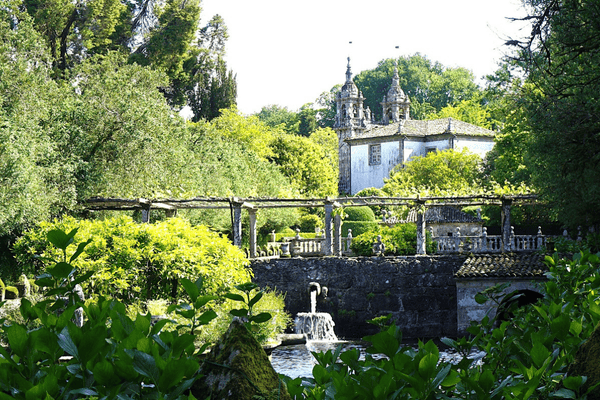
Pazo de Oca is a beautiful 18th century palace located about half hour from Santiago de Compostela in A Estrada region of Galicia.
The historical estate is built in Baroque architecture and has well-maintained gardens stretching for miles around it. The gardens include a large variety of plants including Camellias, magnolias and azaleas arranged in a French style unique in Spain. It also features ornamental ponds and intricate stonework – perfect for those interested in horticulture and history. Several sections of the gardens have channeled waterways with swans and geese making it a pleasure to walk around and enjoy views. This Pazo is a testament to the grandeur of Galician nobles and gives a feel of the Galician cultural heritage.
It is totally enjoyable to drive to this hidden gem through beautiful winding village roads with tons of greenery around. Walking through the vast gardens and admiring the ponds, stonework and landscape provides a great workout for the legs and feast for the eyes. Apart from history, the palace and gardens would best suit photographers and those who love to visit less-crowded destinations with countryside settings.
The popular name “Versalles Gallegos” meaning the Galician Versailles by which it is known as is very apt for this beautiful castle and gardens.
Collserola Natural Park, Barcelona
Contributed by Rebecca from Becci Abroad
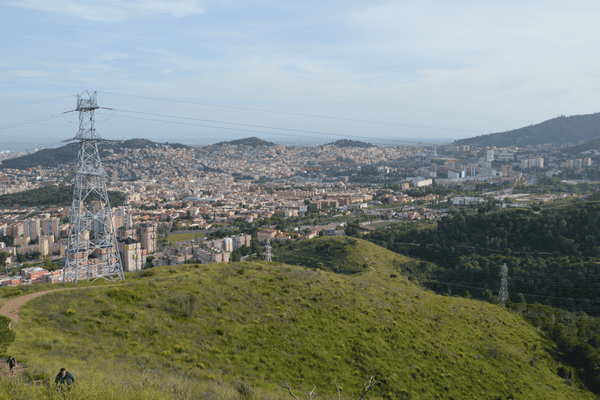
Collserola Natural Park is one of the best-kept hidden gems in Barcelona, and the area is the perfect spot to visit for outdoor adventures on your Barcelona city break.
The natural park lies in a circle around Barcelona, stretching over more than 8,000 hectares of wild green landscapes. The natural park’s quiet settings and beautiful, panoramic views over Barcelona are one of the many reasons why Collserola Natural Park is worth visiting.
The highest and most well-known point in Collserola Natural Park is the Tibidao Summit from which the impressive church, Temple of the Sacred Heart of Jesus, watches over Barcelona. Right underneath the church, you’ll also find the Tibidao Amusement Park, which is a great place to visit with kids.
However, the Collserola Natural Park is much more than the Tibidao Summit! Throughout the area, there are plenty of hiking trails, biking routes, and viewpoints to visit such as Castell de Torre Baró, the Fabra Observatory, and Mirador d’Horta!
Zahara de La Sierra
Contributed by Shrey from Travelicious Couple

Tucked away in the Sierra de Grazalema Natural Park, Zahara de la Sierra was the most unexpected delight of our Andalusian road trip. Perched on a hilltop overlooking a turquoise reservoir, this whitewashed village looks like a storybook come to life, with far fewer tourists than nearby Ronda or Seville.
What made it special for us was the tranquility and authenticity. We climbed up to the castle ruins at sunset and were the only people there. Watching golden light spill across olive groves and mountain ridges in every direction. For such a small place, it’s packed with charm: cobbled lanes, flower-filled balconies, and tiny tapas bars serving local specialties like payoyo cheese.
If you’re driving through Andalusia, I highly recommend detouring through Zahara. Pair it with a scenic drive through the Grazalema mountains or stop for a paddle in the reservoir below. It’s the kind of place where time slows down, and you remember why you travel in the first place.
Tip: Go early in the morning or late afternoon to avoid the day-trippers and experience the village’s peaceful rhythm.
Final thoughts on hidden gems in Spain
Now that you know precisely which hidden gems to visit on your next trip to Spain, I’m curious: which place in this list is your favorite?
Let me know in the comments below!
Happy travels!
Related posts
- Weekend in Madrid: An Epic 2-Day Itinerary for You!
- Segovia One Day Itinerary: The Perfect Day Trip from Madrid!
- 14 Unforgettable Things To Do in Malaga, Spain
- The 24 Most Authentic Hidden Gems in Madeira in 2025!
The 13 Most Incredible Hidden Gems in Spain
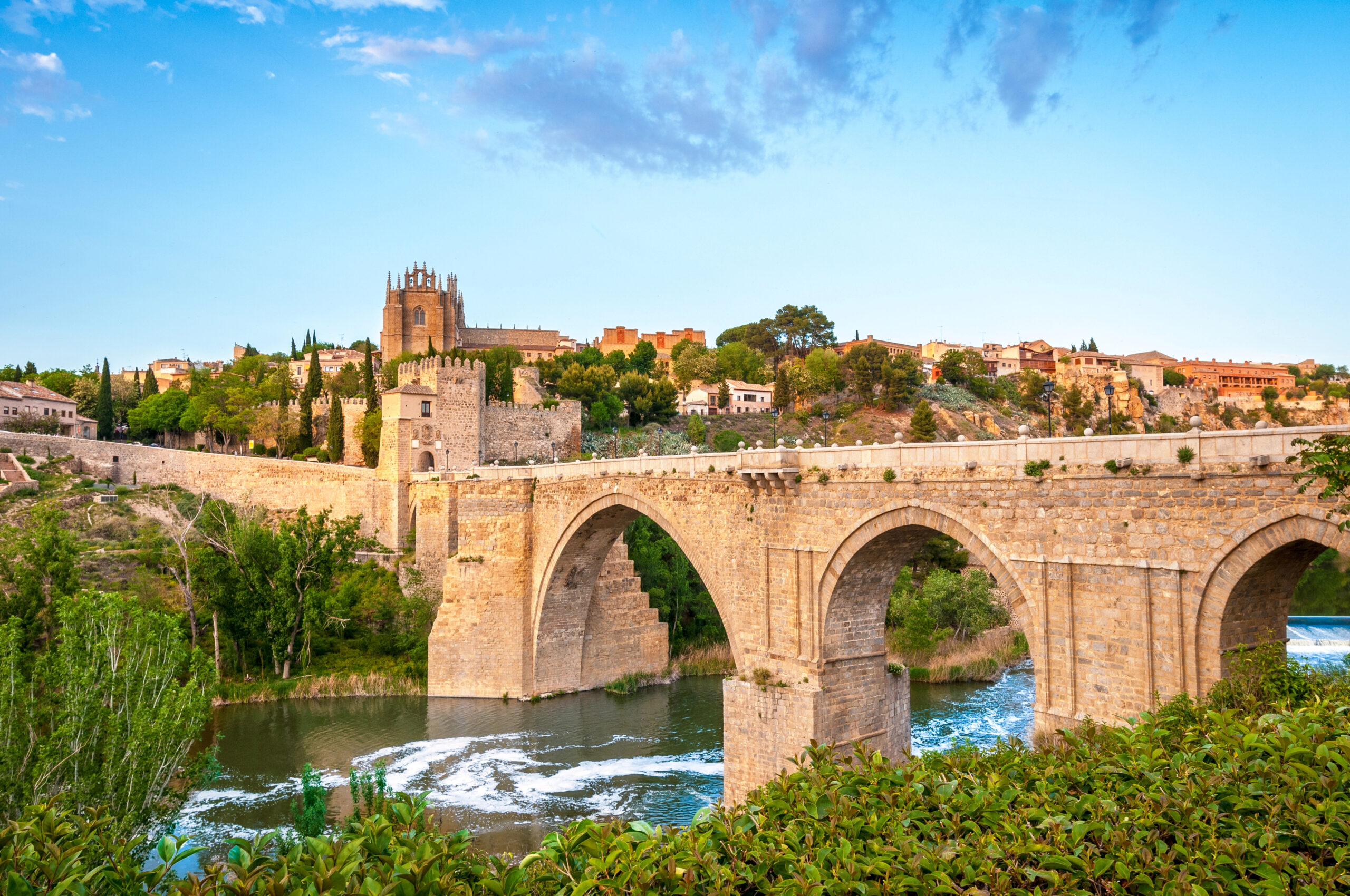
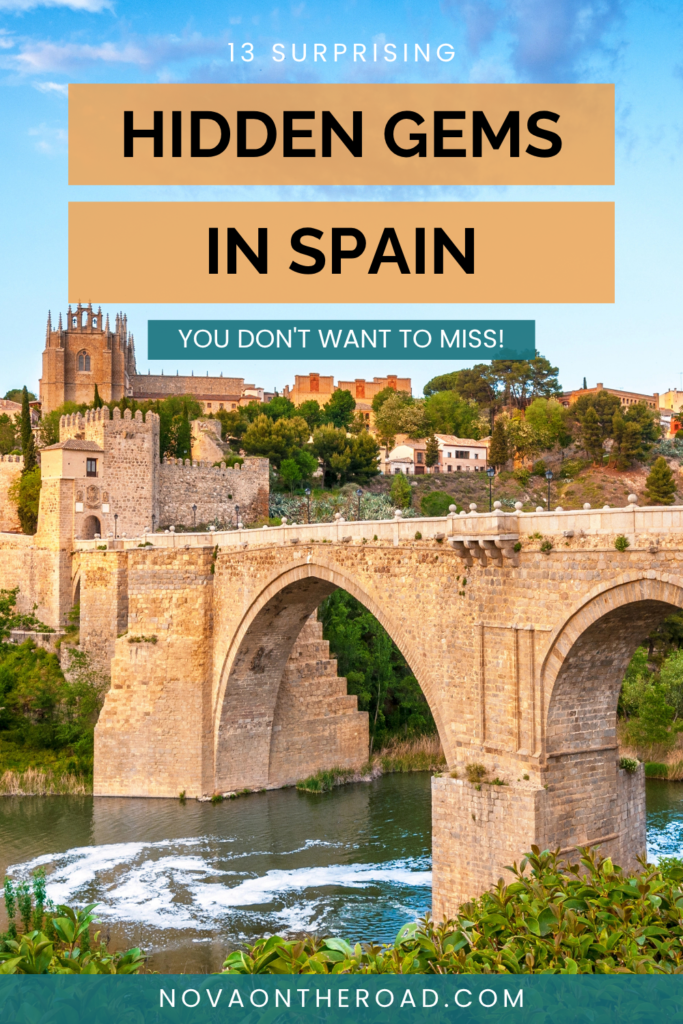
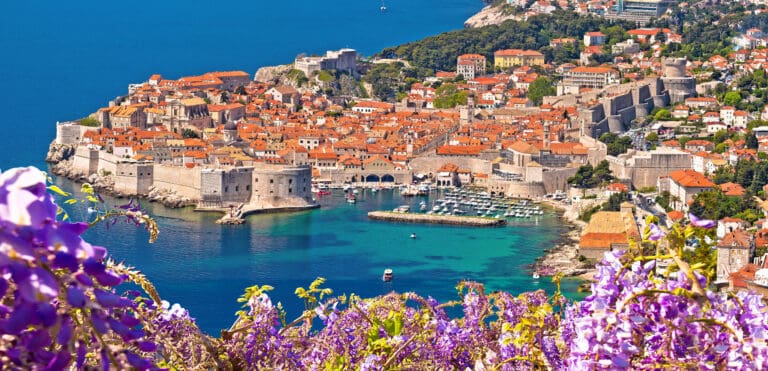
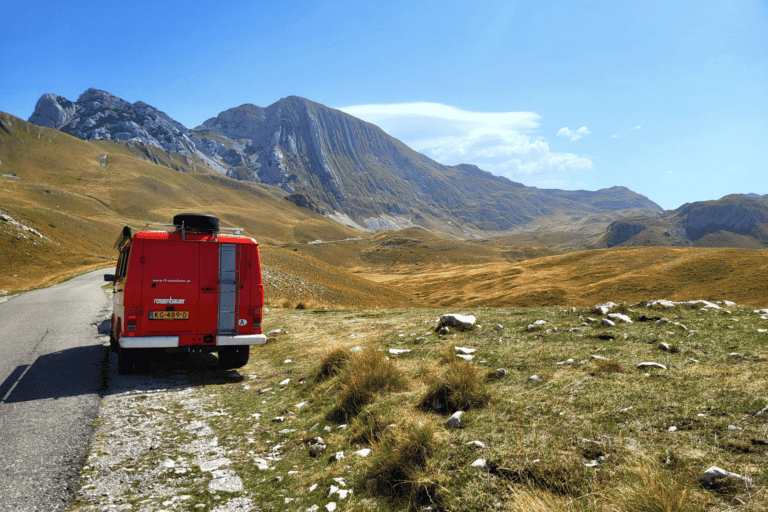



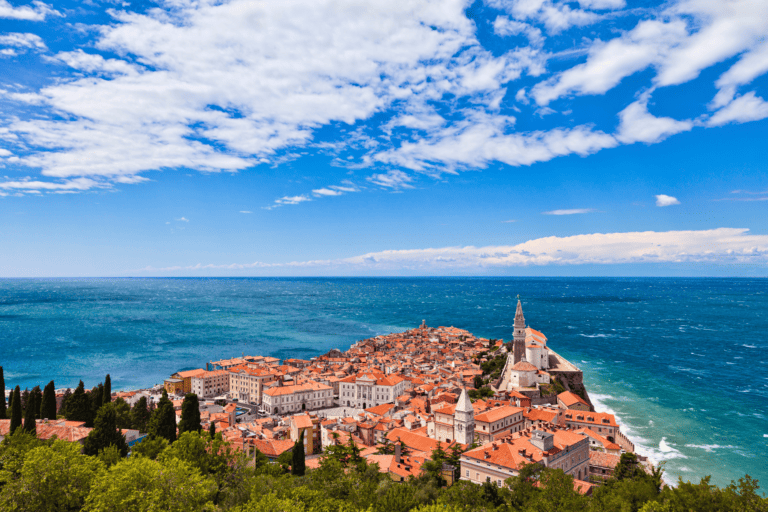
You’ve just convinced me that I need to visit Spain! I love the hidden gems, especially places that are more peaceful and natural. The historical sites sound stunning and I’d definitely want to see the courtyards with all of the flowers! Lovely post! Thank you 🙂